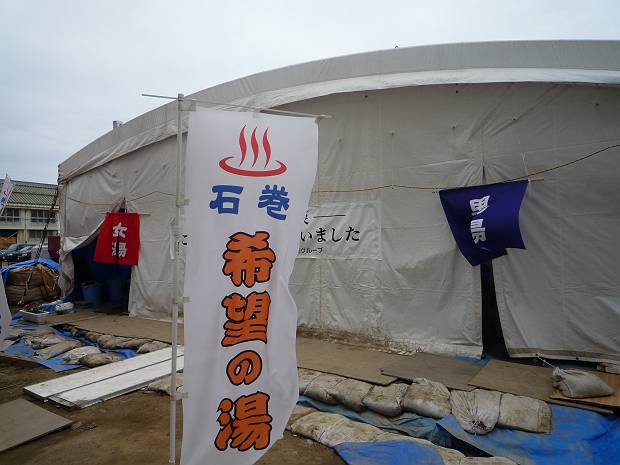
Activity Reports
The 1000 Person Bath Project
June 16, 2011
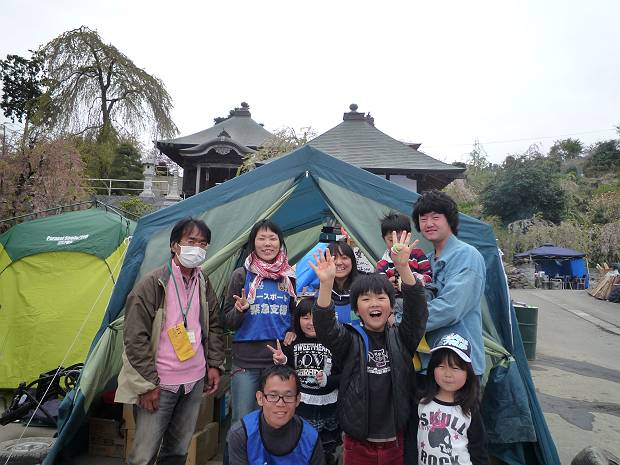
The NGO JIM-NET (http://www.jim-net.net) has launched a project to provide bath facilities for evacuees and survivors, known as the “1000 Person Bath Project.” This was launched by Dr Kamata Minoru, a medical doctor and director of JIM-NET.
Until this project began, the only bathing facilities available for the 70,000 people in Ishinomaki who had no access to water was two baths provided by the Japanese Self Defence Force. There was a great need to provide bathing facilities for the local population, to give them somewhere to feel warm and clean, especially important in Japan where hot baths are a significant part of the culture. Of course, the baths also fulfil other purposes such as preventing communicable diseases also.

Of course during this emergency time, the bath is not big enough for 1000 people to use it at the same time, however to demonstrate the will of the project leaders it was named the “1000 Person Bath.” In reality, small groups of people are able to use the bath at the same time. Of course, despite the small size building such a bath is a difficult undertaking. The facilities were realised thanks to the support of many companies and volunteers, and are now an important and beloved place of relaxation for the local community. The hot water used in the bath is cycled through pumps, and all equipment was generously provided by various corporations. Peace Boat volunteers are also assisting daily with the operations of this bath.
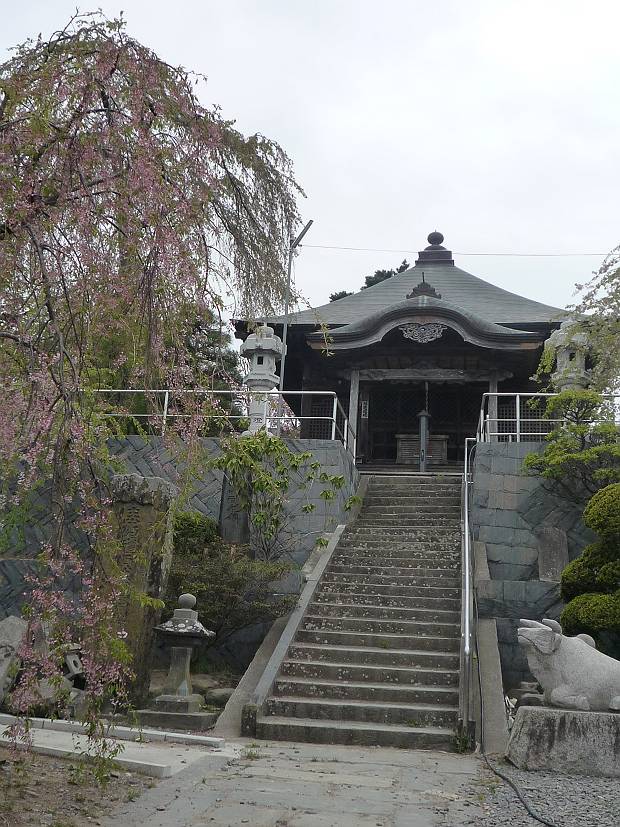
The first bath is located within space provided on the grounds of the Eiganji temple, and was opened on April 8 with the name of “Fudou no yu.” This temple is a central location not only for bathing, but also for providing meals and distribution of relief goods.
Currently, around 50 people are using the “Fudou no yu” baths each day. It can fit 7 people at a time – a comfortable size for Japan, where communal bathing is an important part of daily life, providing not only physical comfort but also a place for the community to gather and talk. Despite the fact that sometimes people are asked to queue, many people living close to the temple or in nearby evacuation centres often use the baths.
The baths are open from 2-6pm, with times divided equally for women and men. There is also a space where people can sit, relax and drink tea after their baths. Lately, many local children also gather at the area – not just for bathing but even just to play.
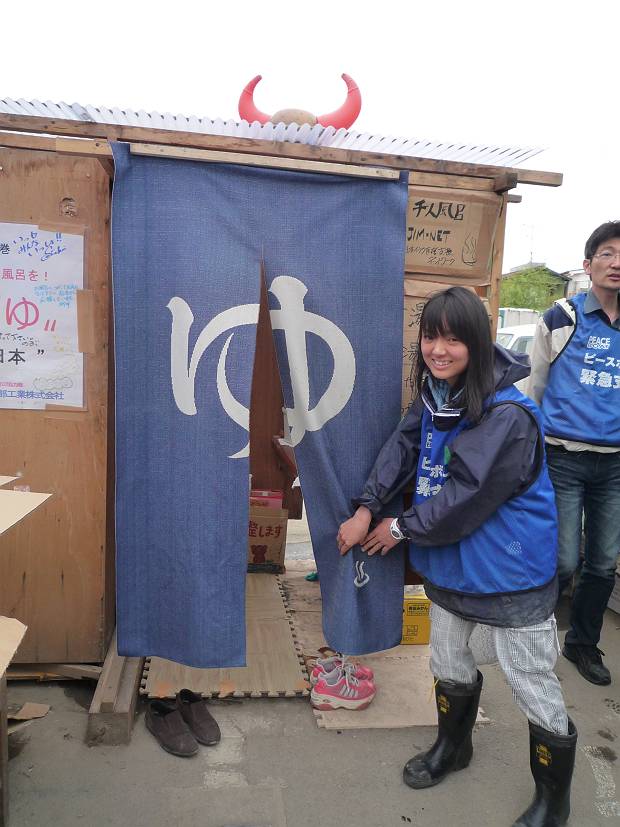 At this site, 2-3 Peace Boat volunteer staff are rostered each day to support the running of the baths. In the morning, they start to heat the water using oil, and pump out the used water. The water is renewed daily, and the bath itself of course also cleaned. The water used here is kindly provided by the temple.
At this site, 2-3 Peace Boat volunteer staff are rostered each day to support the running of the baths. In the morning, they start to heat the water using oil, and pump out the used water. The water is renewed daily, and the bath itself of course also cleaned. The water used here is kindly provided by the temple.
The JIM-NET staff member responsible for “Fudou no yu”, Kumatani-san says, “the water is back in this area, however there is still no gas available. Furthermore, the tsunami overcome the first floor of most buildings, and so people are not able to use their bathrooms at all. It will still take a fairly long time for people to be able to have baths at their own homes. Recently, we were even visited by someone from an evacuation centre a long way away who was so happy, and told us that it was the first time they had been able to bathe in more than three weeks.”
“Fudou no yu” is thus providing a vital service, and the volunteer staff are proud to be able to assist the local community in this way.
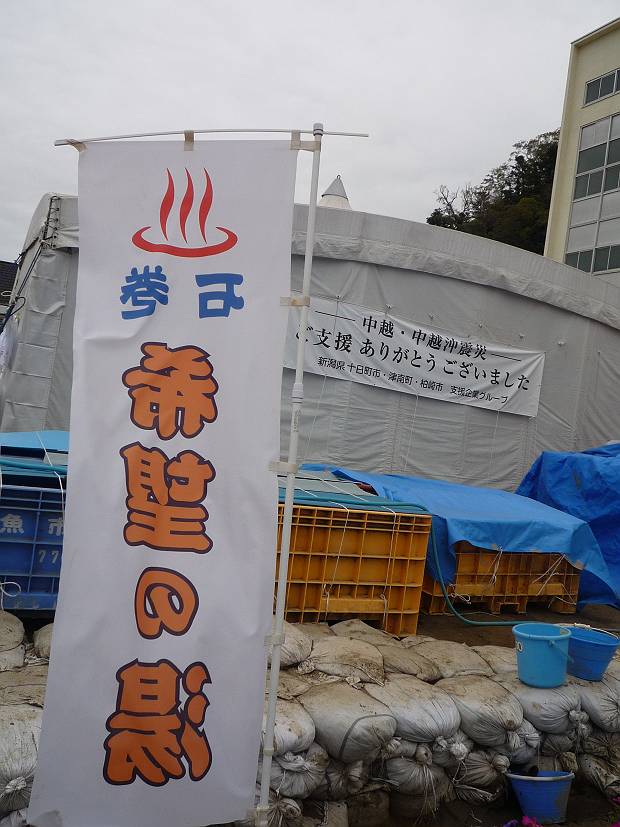
Another bath facility has been established on the grounds of the Minato Primary School, with the name of “Kibou no yu,” opened on April 20. There are two baths here – one for men and one for women – and each day around 200 people make use of the facilities. There are over 200 people still living at the evacuation centre within Minato Primary School, however, meaning that the capacity of the bath is not enough for people to make use of it every day, and instead they can bathe every second day.
JIM-NET’s Ms Nishimura tells of the opening day of the bath on April 20:
“At the time water had still not reached the area, and so we transported it in through water supply vehicles. We had a lot of trouble with the boiler, but somehow managed to open it.”
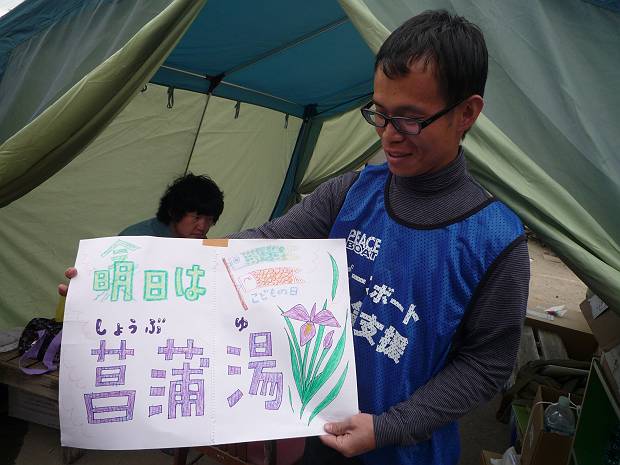
Today, the water has been returned to the area and comes directly to the school also. A huge amount of water is required – each bath tub uses 10 tonnes of water, while 6-7 tonnes to provide water for showers for 200 people.
“The wood used to stoke the boiler is all debris, and so it is totally free. However, depending on the number of people using the bath each day the temperature of the water changes, and so it is quite a challenge to maintain,” says Ms Nishimura.
“People were so happy when we first opened the bath. For the majority of them, it was their first chance to bathe since the day of the earthquake. While some young people had been able to make their way to the Self Defence Force baths or to relatives’ houses further away, it was much more difficult for elderly people. Many people told us that they were finally able to warm themselves, relax, and sleep well.”

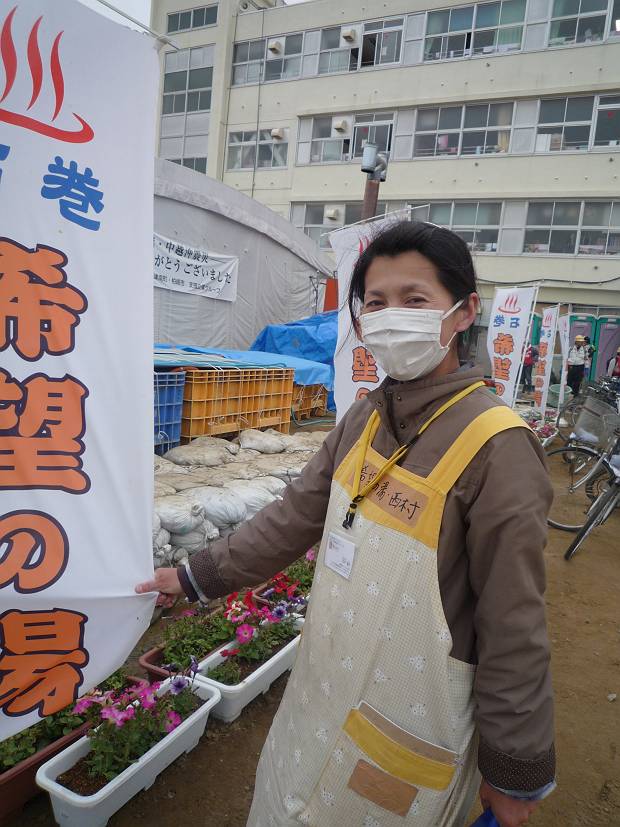
The daily operations are at the moment being coordinated by JIM-NET, Peace Boat and other volunteers, with at least 5 people needed each day to set up the bath, clean and operate.
“At first, we were hoping to be able to pass over the management of the baths to local residents also. However the situation is that they are still struggling to deal with getting their own every day lives back up and running, and so it looks like that is still some time away,” says Ms Nishimura.
* For more information on the 1000 Person Baths Project, please see the JIM-NET staff blog (Japanese language)(http://blog.livedoor.jp/jim_net/?p=2)